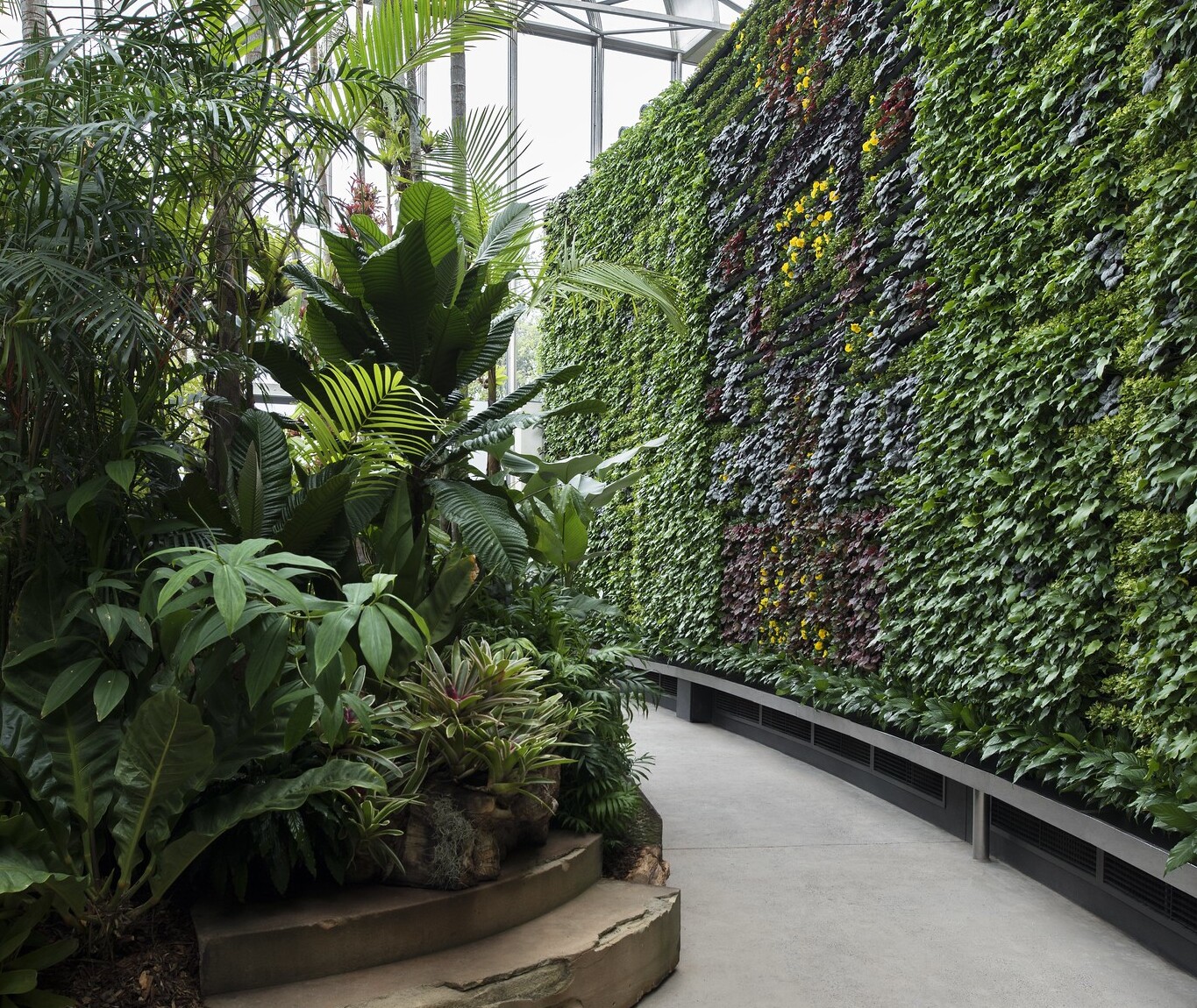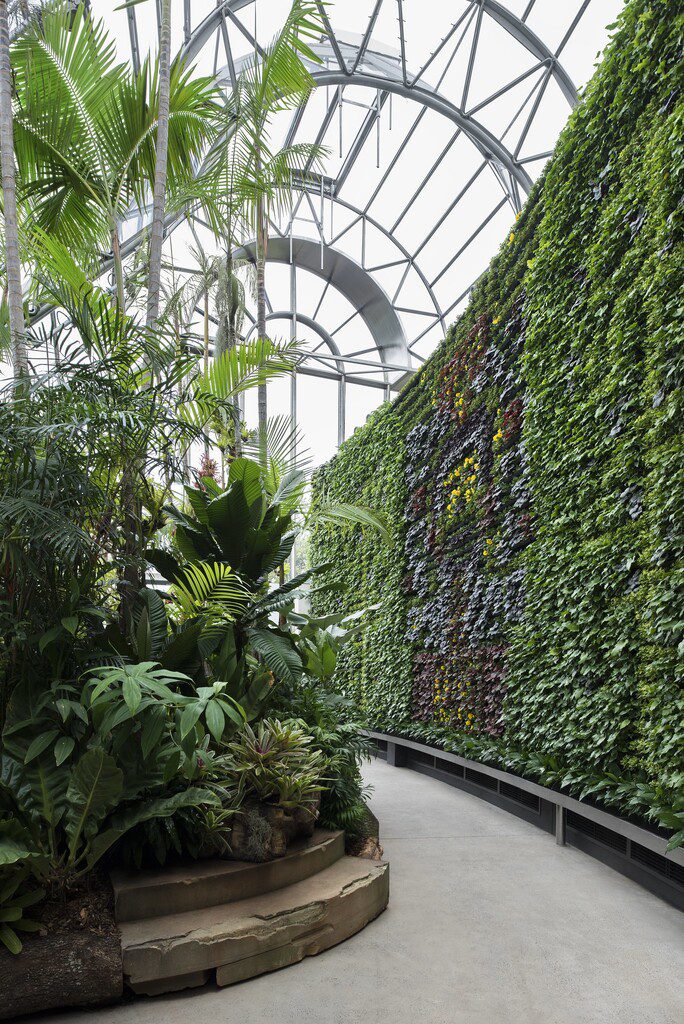
Gardening and landscaping are ever-evolving industries, and in Australia, the latest horticulture trends are shaping the future of these fields. Whether you’re a professional horticulturist or landscaper, it’s important to stay up-to-date with the latest advancements and trends in your industry. In this article, we’ll be exploring the most exciting new trends in horticulture and landscaping in Australia and how they can benefit you and your clients.
Before we go any further, though, it’s important to let you know that the word “trend” is not meant to denote practices that come in and out of fashion. In this article, “trend” simply means a practice that is within the cultural zeitgeist.
1. Green Walls
Green walls provide insulation, reduced energy costs, improved air quality, and promotion of biodiversity and improving air quality. Not to mention the aesthetic and mental health benefits that plants inherently bring. Professional horticulturists and landscapers can use this trend to help their clients create beautiful and sustainable walls that provide numerous benefits.

The green wall at The Calyx at the Royal Botanic Gardens Sydney. Image source
2. Green Roofs
This trend involves creating a layer of vegetation on the roof of a building, providing similar benefits to green walls. Green roofs are also aesthetically pleasing, creating a beautiful and unique living environment. Professional horticulturists and landscapers can use this trend to help their clients create sustainable and aesthetically pleasing roofs that provide numerous benefits. They can be especially challenging to achieve, because there are a lot of horticultural factors to consider.
3. Edible Landscaping
Edible landscaping is another trend that’s quickly gaining popularity in Australia. Incorporating edible plants into traditional landscaping designs provides a source of fresh produce and creates a more sustainable landscape. This is not only environmentally friendly, but also allows homeowners to enjoy the freshest ingredients right in their own backyard. Professional horticulturists and landscapers can use this trend to create beautiful and functional gardens for their clients.
4. Eco-Friendly Landscaping
Eco-friendly landscaping is a growing trend of increasing significance in Australia. It involves using environmentally friendly materials, such as recycled and locally sourced materials, and designing landscapes that promote biodiversity and protect wildlife. Professional horticulturists and landscapers can create beautiful and sustainable landscapes that are not only beautiful but also promote the health and wellbeing of the local ecosystem.
5. Integrated Pest Management
Integrated Pest Management (IPM) is growing in significance within the horticulture industry. It is an environmentally friendly and sustainable approach to managing pests in crops, gardens and landscapes. IPM combines various strategies, such as biological control, habitat manipulation, and the use of selective and low-toxicity pesticides, to reduce pest populations and minimize damage to crops.
The goal of IPM is to minimise the negative impact on the environment, human health and non-target species, while still effectively controlling pests and preserving crop yields. This approach is becoming increasingly important as consumers demand more sustainable and responsible gardening practices.
6. Native Plant Gardens
Using native plants in landscaping designs provides a source of food and habitat for local wildlife, and creates beautiful and sustainable landscapes. Native plant gardens can also be more resilient to local environmental conditions, making some of them a low-maintenance option for homeowners.
However, it should be noted that native plants look best when they’re pruned appropriately just like exotic plants. By embracing the growing trend of utilizing native plants in landscaping and horticulture, professional horticulturists and landscapers have the opportunity to not only attract new clients but also elevate the beauty and sustainability of their current client’s outdoor spaces.
7. Smart Landscaping
The trend of smart landscaping is growing in popularity in Australia. Using technology to make landscaping more efficient, reducing water usage and energy costs, and improving the health and wellbeing of plants and wildlife is an attractive prospect to modern gardeners.
Smart landscaping also allows you to control and monitor your irrigation, lighting and more from your smartphone or tablet. With the rise of automation technology, you’re now able to create customised and cutting-edge designs that not only enhance the aesthetic appeal of a property, but also promote sustainability and efficiency for your clients.
8. Xeriscaping
Xeriscaping is a trend that’s particularly popular in areas of Australia that have faced water scarcity, which is most cities including Melbourne, Sydney and Brisbane.
Use drought-resistant plants and water-saving irrigation systems to create beautiful and sustainable landscapes that are resilient in the face of water scarcity. Professional horticulturists and landscapers can help their clients save money and protect the environment with this trend.
9. Minimalist Landscaping
Modern minimal garden design emphasizes simplicity and functionality, using clean lines and minimal elements to create a peaceful outdoor space. This style often incorporates neutral color palettes and natural materials, such as stone, wood, and plants, to create a harmonious connection with the surrounding environment.
A modern minimal garden may include elements such as a well-manicured lawn, a water feature, or a few well-placed trees and shrubs. The focus is on creating an open, uncluttered space that promotes relaxation and meditation, rather than overwhelming visitors with an abundance of flowers, ornate sculptures, and other decorative elements.
10. Permaculture
Some readers will object to permaculture being called a trend. It involves using sustainable and environmentally friendly techniques in landscaping, such as using native plants, composting, and water-saving irrigation systems.
The 12 principles of permaculture also promotes biodiversity and protects wildlife, creating a sustainable and functional ecosystem. Professional horticulturists and landscapers can use this trend to help their clients create beautiful and sustainable landscapes that promote the health and wellbeing of the local ecosystem.
Conclusion
The latest horticulture and landscaping trends in Australia offer exciting new opportunities for professional horticulturists and landscapers. Whether it’s vertical gardening, edible landscaping, drought-resistant landscaping, eco-friendly landscaping, or sustainable lawn care, these trends provide new and innovative solutions for creating beautiful and sustainable landscapes. By staying up-to-date with these trends, you can help your clients create the gardens and landscapes of their dreams while also protecting the environment.
